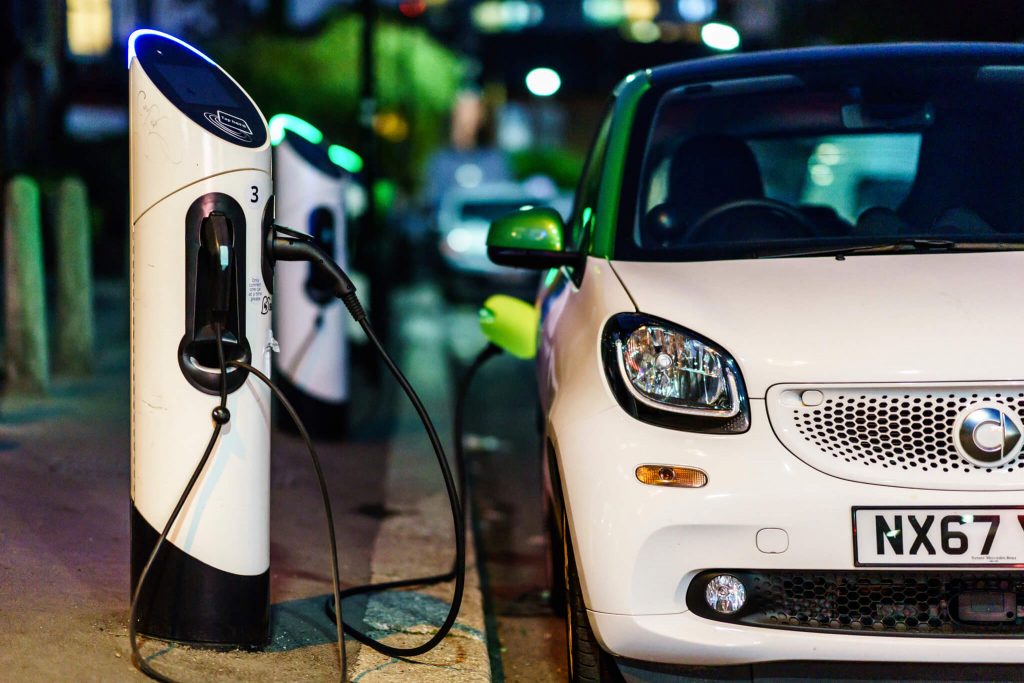One of the biggest challenges in the fast-growing electric vehicle (EV) market is supporting the charging process, which requires a new way of thinking about “EV Infrastructure.” The IoT, big data management and integrity applications (including blockchain) bring solutions to the table, including addressing the ongoing operational costs associated with public and private charging station models.
Based on new advances in the Internet of Things (IoT), Industrial IoT (IIoT) associated sensing devices and communication platforms, as well as blockchain, cloud, edge and information systems, there are ways to address the EV Infrastructure economics and avoid complexities by supporting remote management, maintenance, billing and more.
Here are five innovations using software and secure networking to streamline the “supply chain” making the process of EV charging easier, for consumers, operators and service providers:
- Consumer Mobile Apps: Provide EV drivers with a mobile app designed to authenticate the user, start the charging process, reveal the pricing, then handle billing and processing. This self-serve eliminates the need for “attendants” and other human operators, reducing opex dramatically while also providing a great Customer Experience (CX). Consumers can be provided data and analytics helping them understand their costs and interact with the provider through embedded customer service apps. The app can also help calculate the need for a charge based on a journey planned on another app like Waze or Google Maps; the opportunities for integration between apps is very exciting, and is fed by sensors within the EVs and instrumentation of the charging stations (which can also advertise their location on the most popular navigation apps).
- Charging Station Management: Leverage IoT sensing data to measure electricity taken during the charging process and analyze that compare to the wholesale purchase of that electricity to ensure profitability and efficient price changes as necessary. Which stations are most profitable? Where should investment in additional stations be placed? Where are we seeing interruption in charging, and how can we get out in front of fixing issues that may or may not require a “truck roll”?
- Commercial Trucking Automation: Develop valuable real time services for commercial transportation and logistics companies through analytics based on sensors placed in delivery vehicles (which may someday be driverless), directing the vehicles to the least expensive charging stations, or the closest, depending on the risk profile (to drive a few more miles for a less expensive charge may result in sub-optimal vehicle operations or safety for example).
- Public Sector EV: Publicly sponsored charging stations established through local government + utility company partnerships, can support local or regional programs. These publicly funded networks (the Internet with a virtualized overlay for security), enable communities, cities and counties to lease space on EV networks associated with an application that also keeps track of publicly sponsored charging stations. With a rev share model, programs like these, instrumented with IoT sensors, can bring new revenues to government while the same government makes EV living easier for locals, and the destination more attractive to visitors and tourists. In a model like this, a government program would be the “first receiver” of the data generated on a taxpayer-funded program and could charge for that data to private companies establishing charging stations in an “open EV economy” scenario. This helps solve the start-up “capex” required for the physical builds.
- Energy Conservation: Energy conservation and management can be done locally with edge computing and pulled into a cloud/centralized view. Sensor and power management technologies that support interaction with the EV charger can measure everything from the amount of power consumed, can gather environmental data (for example, in extreme cold or extreme hot months, be prepared for more energy to be used for environmental comfort and more). Creating a highly intelligent and automated management platform is the heart of the solution, given that the ability to oversee and manage charging stations at scale is difficult, expensive and risky without this “control layer.”
In our increasingly connected, mobile and digital world, it is the combination of innovations that create solutions, and the evolution of EV charging stations feeds the growth of the EV market, while the growth of EV charging stations contributes to initiatives designed to reduce the consumption of resources. Take this a step further and consider the correlations possible between solar powered vehicles and EVs, which may become the next “hybrid” vs. the current definition of fossil fuels combined with electricity.
This opens even more creativity and opportunity as IoT solutions measure the input from solar alongside the input from the energy grid, analyzes the data, applies AI to forecast requirements, and improve savings (economically and environmentally).
2020 is a year to think different – again – and to look ahead not just a year or two but through the new decade where EVs and smart vehicles communicate with the energy grid in smart cities and regions. In this case, IoT has the potential to bring everything together – when innovators and investors see the potential to create value for themselves and society.


